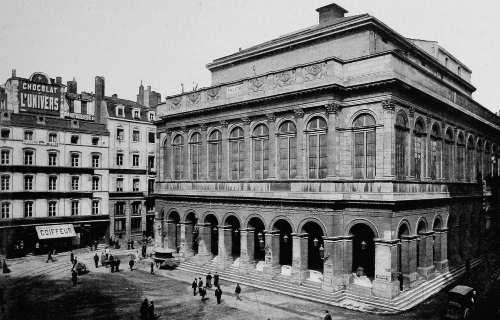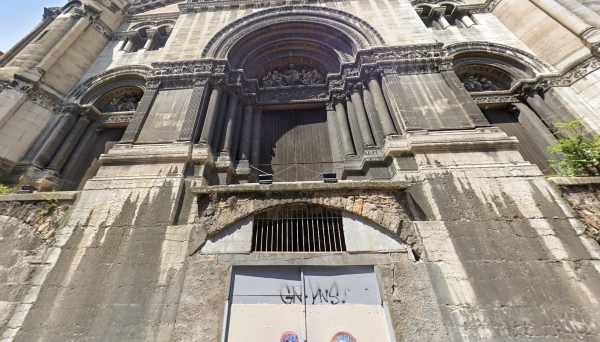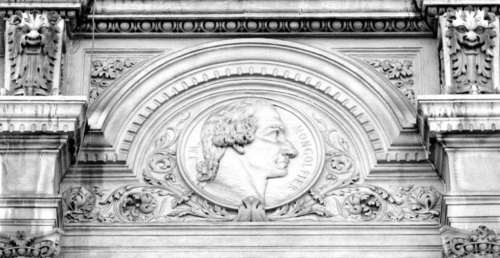- 1 Place de la Comédie, 69001 Lyon
- What you see
- What you need to know
The Lyon Opera, one of the city's most important cultural institutions, has a long history.
Originally called the Grand Théâtre, it was built in 1756 on the former gardens of the town hall by Soufflot (he is also responsible for the transformation of the Hôtel-Dieu). It was unfortunately destroyed in 1826. The opera house was rebuilt in a neo-classical style by the architects Chenavard and Pollet, and inaugurated in 1831. Over time, the red lanterns were added in 1859 and 8 muses in 1862 (each measuring 3 meters high).
Topped with a vault built by Jean Nouvel, it became the Lyon Opera in 1993.
Due to lack of space, only 8 statues of muses (traditionally 9) appear on the attic of the building. Urania, the muse of astronomy, is missing. Initially made of stone, they were replaced, due to decrepitude, in 1912 by cast iron statues.
Read also our article on the Lyon opera.
- Archive images
- Anecdote: new opera to new opera
- 1969: New Opera project to broaden the scope of the Grand Théâtre and the Lyon Opera, aiming to make opera accessible to a wider audience. Lower prices, choice of a more restricted repertoire, and setting up world premieres.
- 1986: The Lyon Opera becomes an association of the 1901 law type. The City of Lyon continues to provide two thirds of the opera's budget in the form of a subsidy.
- 1990: Due to the dilapidated state of the building, the City of Lyon is undertaking the rehabilitation of the Opera.
- 1993: The rehabilitation project by architect Jean Nouvel has been selected.
Conservation of the four façades of the initial project by Chenavard and Pollet, as well as the public foyer. Inside, creation of a modern performance hall. Inauguration of the Opéra Nouvel in 1993. - 1995: The Lyon Opera becomes a national opera.
- Today: The Grand Théâtre is one of the cultural establishments of the City of Lyon.
It continues to host the Opéra de Lyon association.





